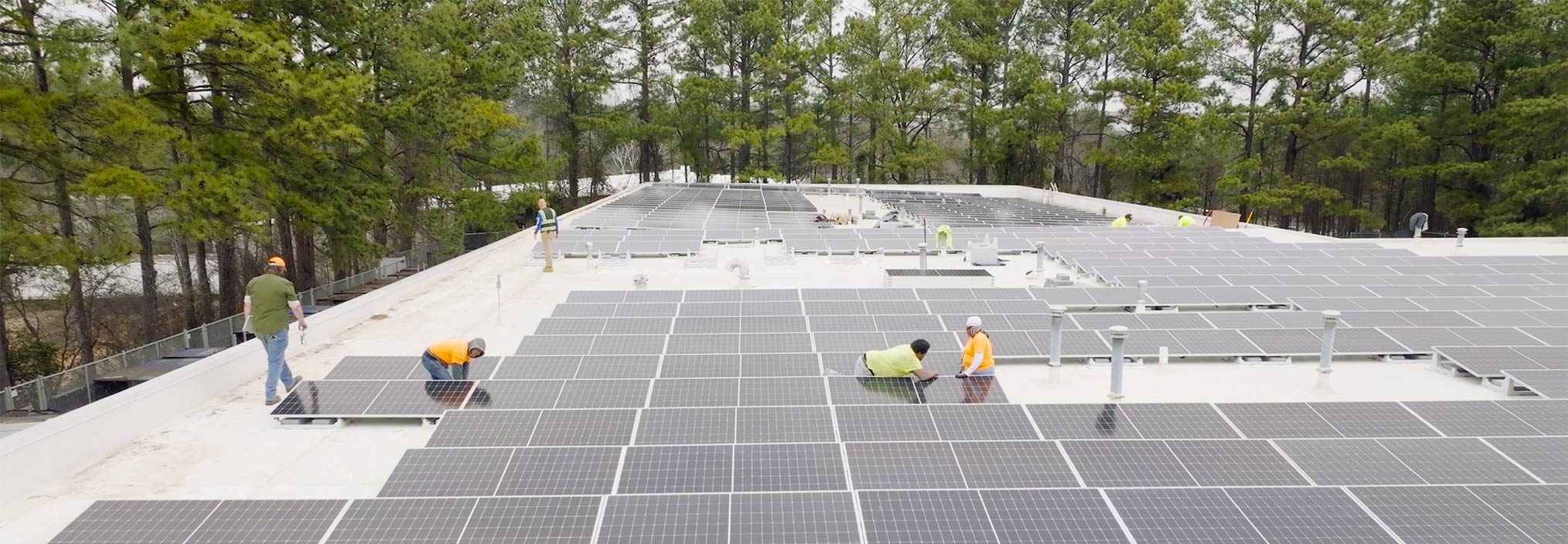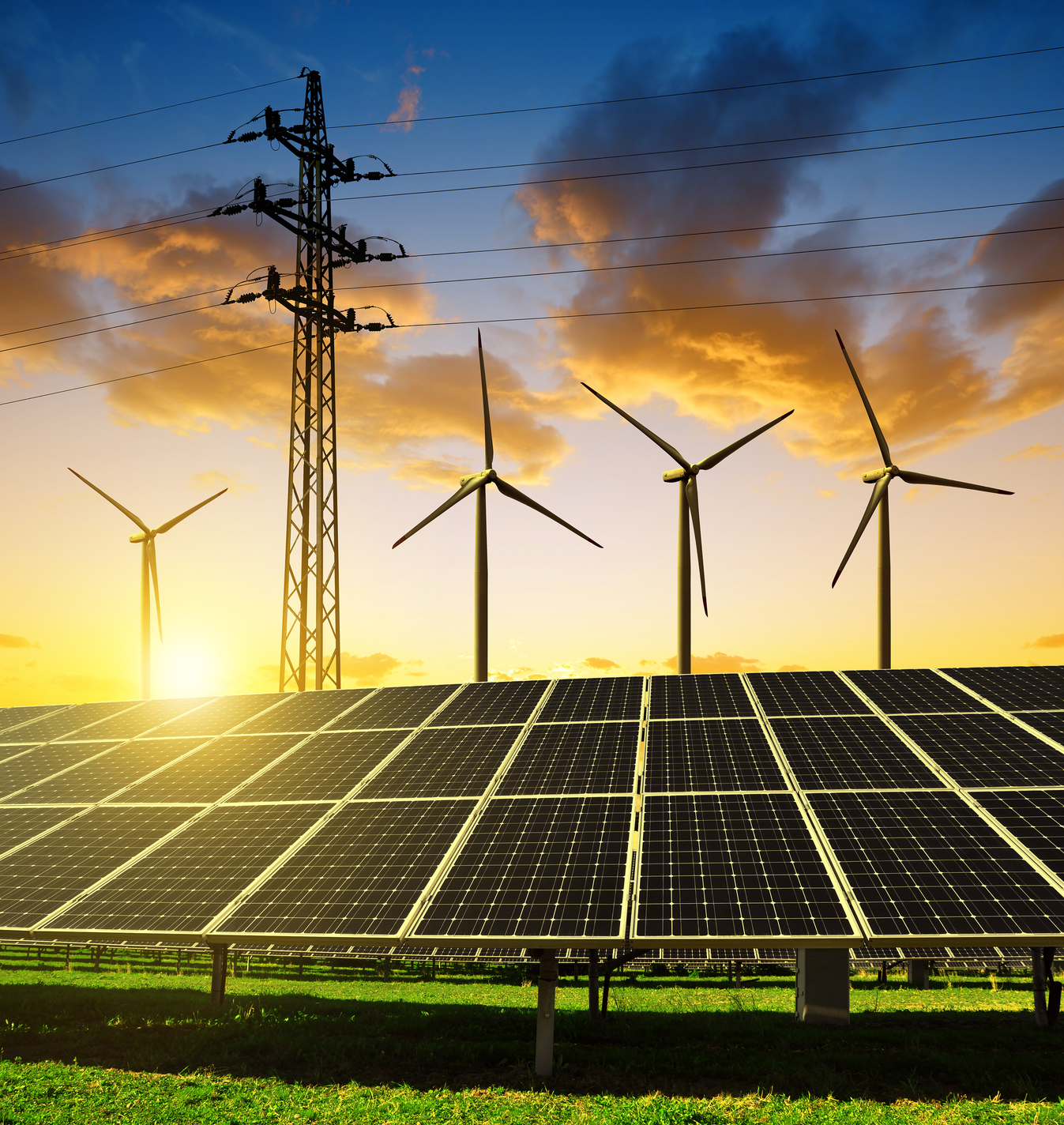Recipients in landmark Greenhouse Gas Reduction Fund are committed to reducing pollution, delivering economic benefits to underinvested areas, and mobilizing more financing.
The nearly $400 billion in federal funding for clean energy that the Inflation Reduction Act set in motion in 2022 includes incentives for corporations, investors, and others to adopt clean energy technologies.
A component of that legislation, the landmark $27 billion Greenhouse Gas Reduction Fund (GGRF), will play a vital role in sparking and maintaining clean energy financing as a form of community development in underserved urban and rural areas. The fund, administered by the Environmental Protection Agency (EPA), is supporting a vast array of work to cut greenhouse gases and other dangerous emissions across the U.S. while creating stable, well-paying jobs in underinvested areas. How? By financing clean technology and energy efficiency improvements in underinvested areas and supporting community lenders to sustain and expand those investments. The efforts will lower energy bills for millions of people and improve the environments where they reside.
“It’s a critical program because it really focuses on ensuring that our country’s transition to a clean energy future is one that is inclusive and equitable,” said Beth Bafford, CEO of Climate United, a partnership managing $6.97 billion of GGRF investments.
Climate United is one of more than a dozen MacArthur grantees and investees receiving funding from the GGRF. In fact, the majority of recipients are direct MacArthur grantees or longtime Foundation impact investees, including, Self Help Ventures Fund, Enterprise Community Partners, and Local Initiatives Support Corporation.
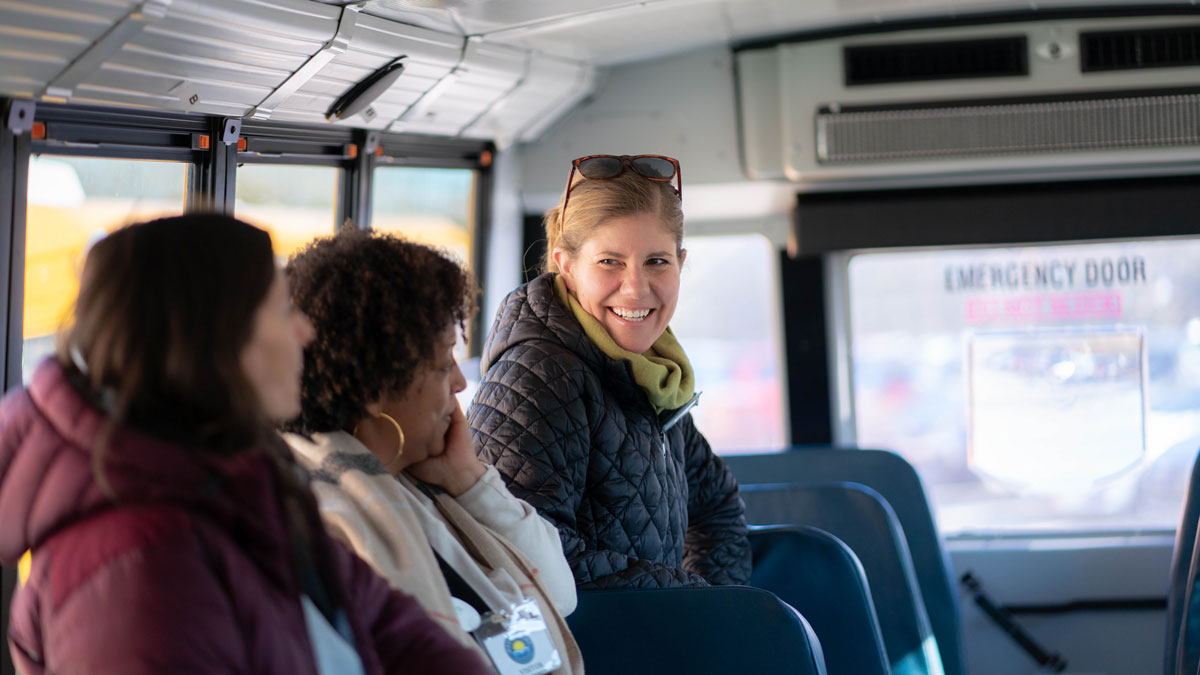
Climate United CEO Beth Bafford, here riding an electric school bus in Durham, N.C., said the GGRF is critical to ensuring that the clean energy economy benefits all communities. Credit: Climate United
Beyond that, Coalition for Green Capital, a MacArthur grantee, helped make the case for the GGRF through the Invest in Our Future fund. The MacArthur-supported collaborative brings together philanthropic organizations across the country to ensure that the clean energy economy is inclusive.
Over the past several decades, MacArthur provided more than $140 million in impact investments to build the financial strength and organizational capacity of community development institutions that have received EPA awards to implement the GGRF. This support helped position these organizations to respond to the GGRF opportunity when it was announced.
All recipients of GGRF support have committed to the fund’s objectives to reduce climate and air pollution, deliver benefits to communities—especially low-income and historically underserved areas, and mobilize financing and private capital.
Replicating Successes
Converting the intent and concepts of the GGRF into tangible, on-the-ground benefits comes with its share of challenges.
“One of the biggest is making sure that funds are deployed quickly, effectively, and equitably so people really feel the impact of these projects,” said Peter Colavito, Executive Director of Invest in Our Future. Crucial to the success of that effort, he added, is getting trusted Community Development Financial Institutions, or CDFIs, up to speed on the work.
“Doing all that well is how we build greater and greater bases of support,” Colavito said.
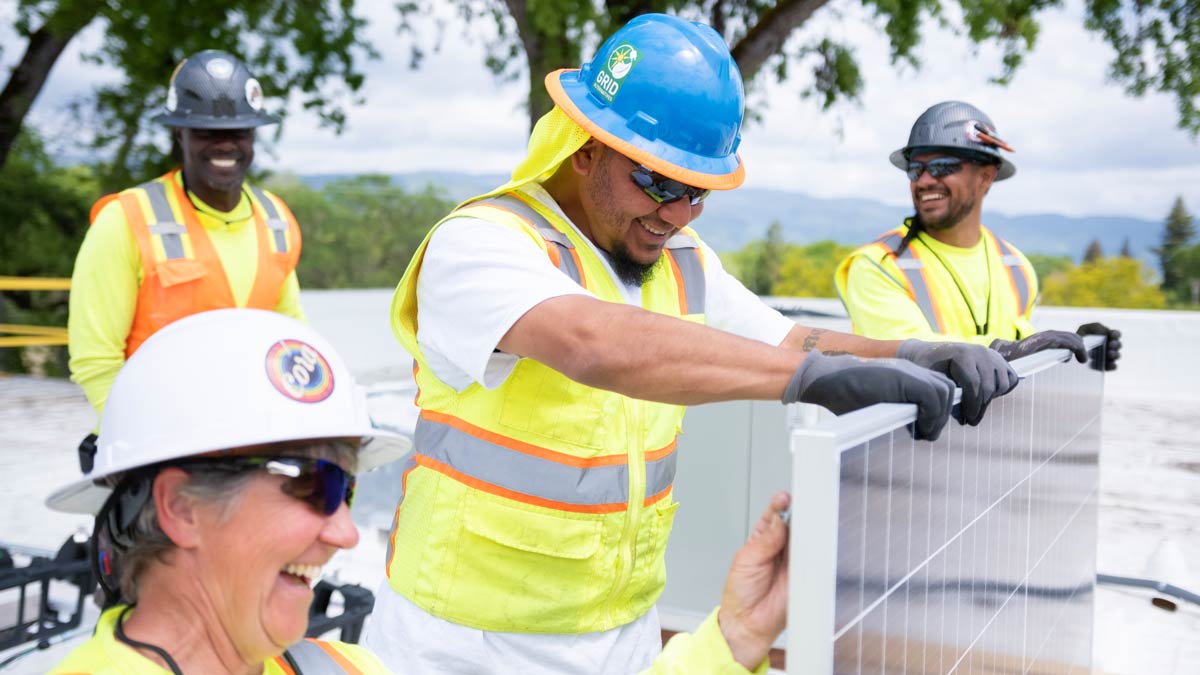
Invest in Our Future grantee CHARGE Partnership will utilize GGRF funding to expand its effort, shown here, to bring solar energy to community health centers across the country. Credit: CHARGE Partnership
Other MacArthur grantees and investees noted that, early on, understanding how to use EPA funding to support partners was challenging, as was launching a wide variety of other programs created by the Inflation Reduction Act at the same time.
“Going forward, one of our challenges as a coalition will be continually understanding where we can identify things that are working,” said Kerry O’Neill, CEO of Inclusive Prosperity Capital (IPC), a nonprofit investment platform supported by MacArthur that focuses on underserved communities and under-invested markets. IPC received $250 million in GGRF funding and leads the Community Power Coalition, which is increasing the capacity and deployment of community-based solar developers.
“One of our challenges as a coalition will be continually understanding where we can identify things that are working.”
“Our success will be figuring out how to replicate the successes and taking them elsewhere,” O'Neill added.
An early key to GGRF’s success—collaboration across the broader ecosystem—is occurring in best practices, new ideas, and potentially sharing services to give the funding its greatest potential impact, said Invest in Our Future Program Manager Coral Abbott.
“Collaboration is essential to reaching the goal of a robust, new clean energy market in the U.S.,” she said. “If everyone’s operating separately, it just won’t happen the way it needs to. I think everyone’s aware that what we’re doing is much bigger than organizations competing for deals.”
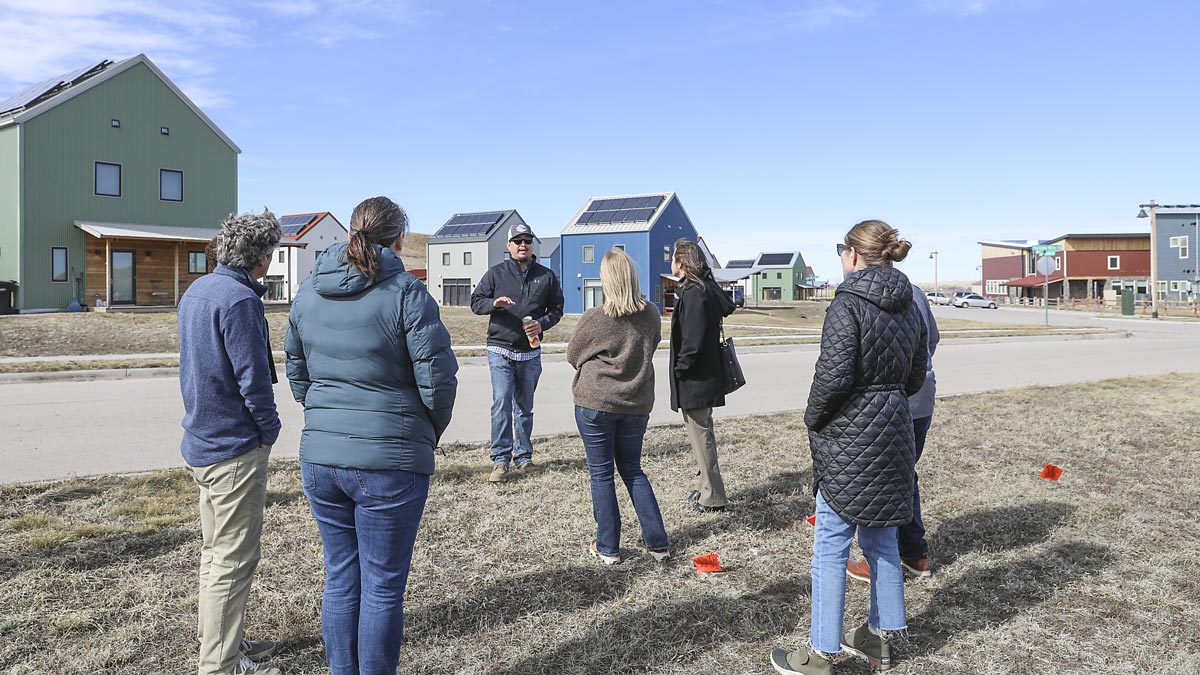
Climate United, which works with Native-serving organizations on financing clean energy investments, sent a team to visit the Pine Ridge Reservation in South Dakota. Credit: Climate United
Bafford of Climate United said the organization has been scrutinizing its investments of time and resources in building the clean energy market, technology, data aggregation, training, and other areas. The goal is to determine what is best to share to “create a whole that is greater than the sum of its parts,” and what is best to undertake individually because it is specific to an organization’s strategy or deployment, she added.
“Our goal is to make sure that we’re setting up this ecosystem to be sustainable long term.”
“We want to learn lessons from the past, where that same focus on market or ecosystem building hasn’t existed, where we haven’t been able to leverage the collective resources and intelligence,” Bafford said. “Our goal is to make sure that we’re setting up this ecosystem to be sustainable long term.”
Philanthropy’s Ongoing Investment
Philanthropy can continue to play a crucial role.
Leaders of the GGRF acknowledge that $27 billion is a substantial commitment but that it is just a start. Philanthropy can continue driving the transformation by investing directly in the financing of clean energy projects and encouraging commercial investors to do the same.
O’Neill and Bafford said philanthropy could also support GGRF efforts to build capacity and workforce in the industry, both of which have modest federal funding.
“This is a program that is 100 percent focused on low-income and disadvantaged communities,” O’Neill said. “This work takes time, steadiness, and perseverance.”
Enthusiasm and optimism are high as the work of GGRF recipients in jump starting the transformation to an inclusive, equitable clean energy economy has begun.
O’Neill is excited about unlocking innovative models to expand and strengthen solar energy and “building up the community of practice.”
“[It's] an incredible opportunity to reverse health and economic wounds.”
Colavito said the program’s potential for life-changing impact is enormous; that it’s “an incredible opportunity to reverse health and economic wounds” to people across the U.S.
Bafford agreed, adding that lessening the focus on climate change fear is important.
“If we can make this more about opportunity and ways to really make people’s day-to-day lives better,” she said, “that’s going to start to shift the conversation overall. So, that’s what we’re going to try to do at the local level and build that over time to a national message.”
The majority of the Greenhouse Gas Reduction Fund recipients are direct MacArthur grantees and investees, such as Climate United, or longtime Foundation impact investees, including Inclusive Prosperity Capital, Self Help Ventures Fund, Enterprise Community Partners, and Local Initiatives Support Corporation, among others. The Coalition for Green Capital, a grantee and Catalytic Capital Consortium awardee, helped make the case for the GGRF. MacArthur also supports recipients of these EPA awards through the Invest in Our Future Fund.



